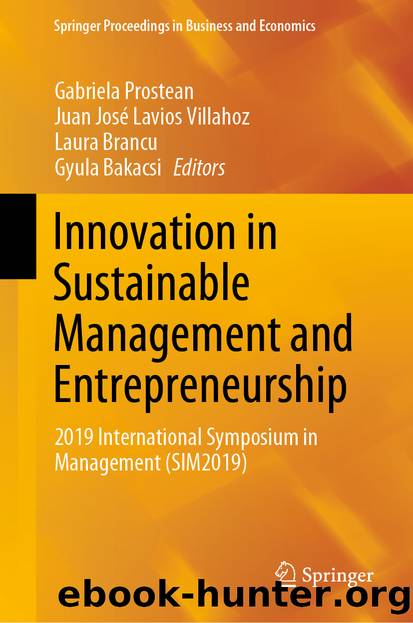Innovation in Sustainable Management and Entrepreneurship by Unknown

Author:Unknown
Language: eng
Format: epub
ISBN: 9783030447113
Publisher: Springer International Publishing
speed to market—66%,
growth—64%” [31].
As stated by several authors [6, 12, 13, 15, 17, 20], with the changes in work that needs to be done and with the arrival of younger generations and new technical possibilities, the boundaries that define traditional workspaces and organizations have been changing in last decades: employees work from the office, home and workspaces owned by third parties; they work in private offices and open offices as well as from hot desks and co-working spaces. Mobile devices and free Wi-Fi internet are often overtaking the laptop, the PC and internet access provided by a particular employer as our primary interfaces to the digital world.
Results of a 2016 survey by Gallup show that “more than half of employees in the USA (53%) say a role that allows them to have greater work–life balance is ‘very important’ to them when considering whether to take a new job. Similar numbers of employees (51%) say they would change jobs for one that offered them flextime, and 37% would do the same for a job that offered them the ability to work where they want at least part of the time” [16].
However, new types of work and the nature of providing services (especially back office) come with their own set of challenges. Quality is harder to measure than quantity, especially for organizations that provide services. Several authors [4, 18, 31] noted that “output benefits are generally measurable only in ‘industrial age’ knowledge work such as call center operations. There is little consensus on how to assess ‘information age’ benefits of technology or environment—the higher-quality decision-making that goes on when managers are better informed, or the faster response rates that come when groups of workers can collaborate more effectively” [31].
What should service providers take into account when choosing and setting up a modern office? Business objectives, KPIs and employee tasks should be thoughtfully linked to a varied approach to modern ways of working. A detailed look into the tendencies and suggestions can be found in the section “facilities, employees and management” of this article, but the strategic view is illustrated by the opinion [31] that an optimal office is not one that remains in the historic building of the organization or one that is cheap to rent, etc., but is actually the office that creates the optimal working conditions: keeping business imperatives (finance/cost, processes, customers and people) unchanged; measuring efficiency, effectiveness and expression; choosing and using optimal workplace initiatives and making sure performance metrics are met.
To understand the nature of modern services, regardless of the industry, it is important to look into megatrends which have been summarized in the report produced by Copenhagen Institute for Future Studies:“services will be much more tailored, targeted, responsive and dynamic toward user needs,
Download
This site does not store any files on its server. We only index and link to content provided by other sites. Please contact the content providers to delete copyright contents if any and email us, we'll remove relevant links or contents immediately.
Pale Blue Dot by Carl Sagan(4858)
The Rules Do Not Apply by Ariel Levy(4789)
Goodbye Paradise(3666)
Ogilvy on Advertising by David Ogilvy(3456)
Delivering Happiness by Tony Hsieh(3332)
Liar's Poker by Michael Lewis(3323)
Into Thin Air by Jon Krakauer(3261)
Purple Cow by Seth Godin(3107)
Rogue Trader by Leeson Nick(2945)
The Social Psychology of Inequality by Unknown(2900)
The Airbnb Story by Leigh Gallagher(2751)
4 - Harry Potter and the Goblet of Fire by J.K. Rowling(2612)
The Mind Map Book by Tony Buzan(2472)
Bossypants by Tina Fey(2422)
Claridge's: The Cookbook by Nail Martyn & Erickson Meredith(2317)
All the President's Men by Carl Bernstein & Bob Woodward(2299)
Six Billion Shoppers by Porter Erisman(2241)
Master of the Game by Sidney Sheldon(2204)
Alibaba by Duncan Clark(2001)
